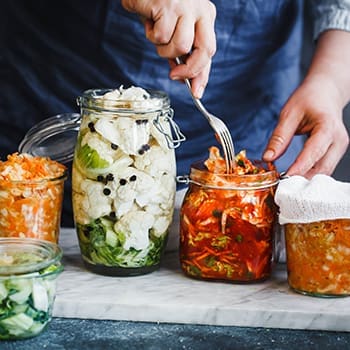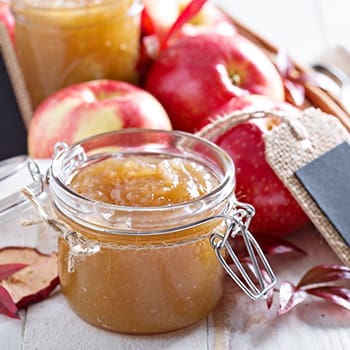September is upon us and with that comes a whole new list of tasks and challenges for the homestead no matter how large or small it is. Indeed, as some of us begin to experience the first taste of frost toward the end of the month, it’s time to get ready for sweater weather, a plethora of pumpkin spice treats everywhere you go, and the leaves starting to change color (if you’re up north).
So, let’s get going and see what we need to do in September!
Discing Your Fields/Tilling Your Garden
If you aren’t intending to use your garden (no matter how large it is!) throughout the fall growing season and your plants are spent, it’s time to go ahead and disc them over (or till them if you have a smaller garden). If you haven’t done this already, get to it! Those cucumber vines and long bean plants are going to start drying up and be of no use to you for green fertilizer to renew your soil.
Obviously, if you still have crops coming in, wait until closer to the end of the month to go ahead and do this step. You may want to search plants for pests, too, before mulching them into your soil. Eggs can over winter very easily on fragments of leaves and the last thing you want is to let some evil little squash bugs snuggle down for the cooler months and pop their pesky heads out when it warms up.
Canning
If you aren’t already canning in August, it’s likely that you’ll start canning your produce (and maybe even your meat, eggs, or milk!) in September (or very early October; watch out for next month’s issue where we’ll talk about canning even more!).
If it’s canning season for you, the best advice that we can give is to look out for deals on your necessities. Are you making pickles? There’s a very good chance that both jars and salt will turn up on your list and you’ll probably find tons of great deals on both throughout this time of the year. Our tip? Look at craft stores, not necessarily grocery stores. The grocery stores rarely care how long the salt sits on their shelves; after all, it has a long shelf life and people tend to buy it in bulk.
However, the craft stores know that their Halloween and Christmas decor items are coming in and those early fall items, like canning materials, need to get off their shelves right now.
So spend a few extra minutes browsing your Joann’s advertisement or glancing at your Michael’s coupons; you’ll probably make out like a bandit if you get a jump on your canning supply list in September.
And, just like the grocery stores think, you can keep that stuff around for a few years without worrying about the quality. Stock up if you can and be ready for next year!
However, you can keep it around for years in this place and this place only. Not only does it hide your valuables and food in plain sight, but it can also protect you if looters come on your property or when the EMP hits. Here’s how you can make it.
Hunting Season Opens!
If hunting season for deer, rabbit, squirrel, and such animals isn’t already open in late August for you and yours, it’s likely that you’ll see it open come September. Whether you’re going after meat for your freezer with a gun or a bow (or perhaps even trapping, no judgment here), you’ll need to renew your license(s) and make sure your equipment is up to snuff!
Take a weekend and renew your license, make sure that you still have access to the same hunting area, and go looking for changes that have happened over the year you haven’t been out there. You may find washed-out trails or bridges, signs of aggressive predators you’ll want to watch out for, or dozens of other potential issues. Address these before you find a sour surprise on opening day and enjoy the season and what you harvest!
September Forage Fest
As nuts ripen on trees and are ready to fall, as mushrooms pop out of the dirt in huge quantities, and wild fruits burden their plant’s branches, there is an entire world of wild food out there just waiting for you to go get it.
Already an experienced forager? Fantastic! But if you aren’t, remember to spend some time with someone who is and to learn what to take and what not to take. This is especially important with mushrooms since they are so easy to accidentally misidentify. Take your time and be sure what you put in your pockets is safe and always try only the smallest portion before, say, making a pie with the berries you’ve found.
If possible, take pictures with your phone and send them to a friend if you’re not absolutely certain. This way you have someone who can send a doctor the pictures if you do become ill from what you’ve gathered.
Those cautions aside, billions of pounds of food go to rot in the wild because we don’t bother to go get it. Find what you know is safe and dig in!
What To Do With All This Food?!
Secure it! Whether you’re hunting, foraging, or gardening, those who are successful at these things will always have a bounty of whatever they’ve taken or grown. The biggest problem is that food inevitably rots.
What stops that?
Preservation.
In this article, I’m including a recipe for apple butter but this works great with any fruit. You are essentially making a very heavy cider, then boiling it down until you can sweep it across your endless loaves of frozen/thawed zucchini bread. The brightness of these fruit butter will last for months in the fridge and will give you a taste of summer no matter how dark the winter gets.
Remember that you can scale this for any amount, but we’re assuming you’ve gone apple picking and have quite a basket to assign a task to.
Apple Butter
15 pounds of apples
1.5 pounds of sugar (brown sugar is okay if you prefer that)
2 gallons of water
1 3 oz jar of powdered cinnamon (or approximately 40 sticks)
Instructions:
Peel and core your apples, then slice them into quarters. Turn on the heat in a large stock pot and let it start to cook the apples as you peel and slice. Add 2 gallons of water and cook until the apples are soft and squishy. Cook down until there is very little water left (this will take several hours in most climates).
Once there is nearly no water left and the apples are beginning to stick to the bottom of the pot, add your sugar and cinnamon and, using a large wooden spoon or a pestle, smash the apples into a paste. The sugar will help in this process and you may be surprised at how much fluid seeps out of the fruits.
Cook this mixture until jam-like thickness. If you desire a slightly “brighter” taste, feel free to add a few drops of lemon juice. Allow this to fully cool before putting it in jars for storage. You may also add things like dried cranberries or raisins to the jar as well for extra bite and textures.
If it’s in the fridge as suggested, its shelf-life can be 6-12 months or even more.
Final Thought
Happy Fall, y’all! I hope you enjoy this apple butter for years to come because I certainly do! Comment below to let me know how it goes!
You may also like:
10 Vegetables To Plant In Fall For Winter Harvest
What really happens when you bury a shipping container (Video)
The Forager’s Guide To Wild Foods: Book Review









